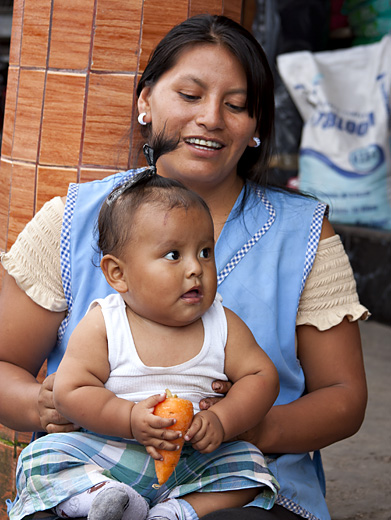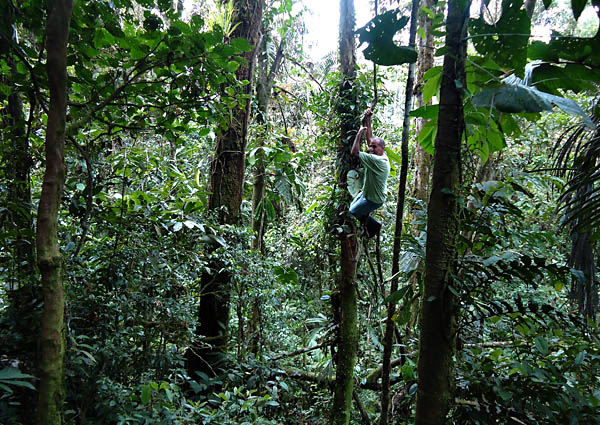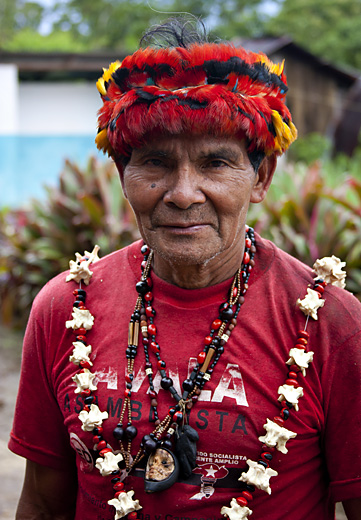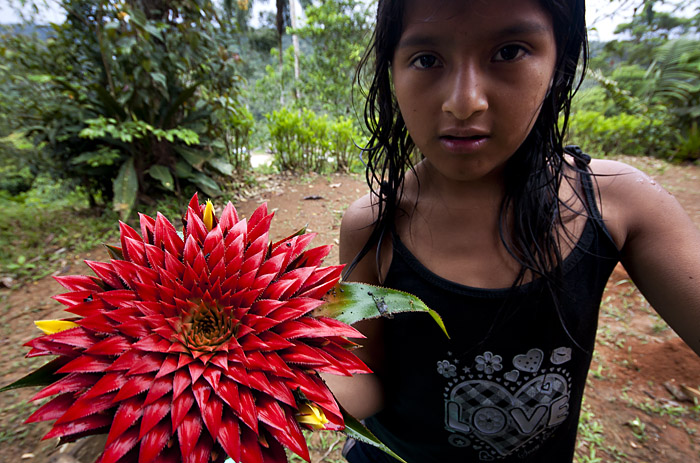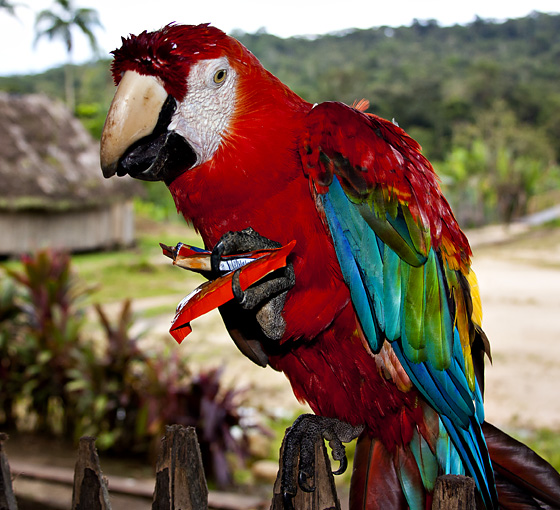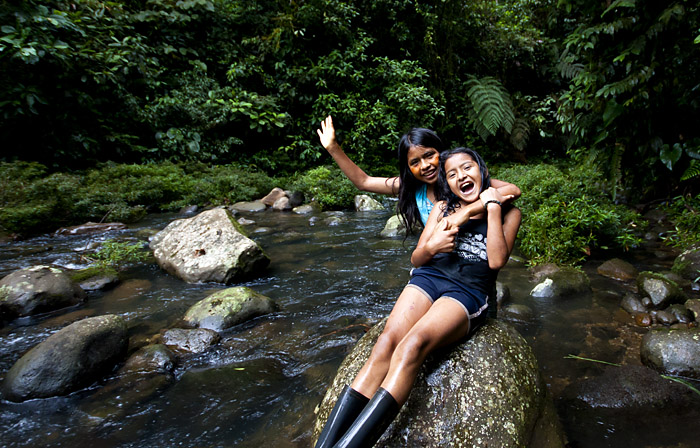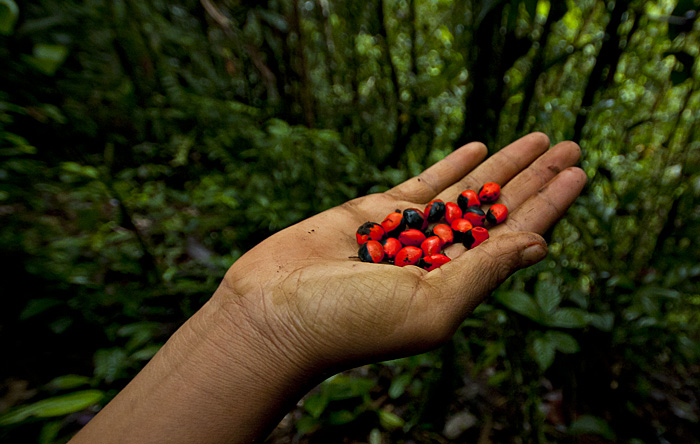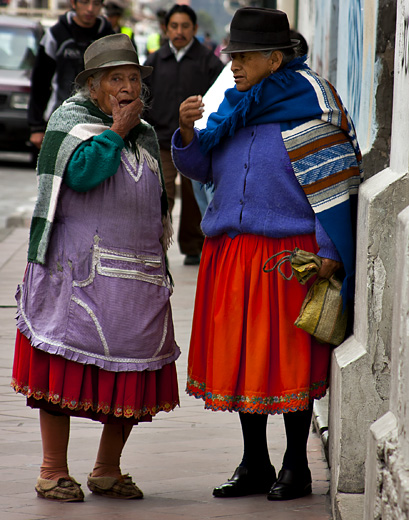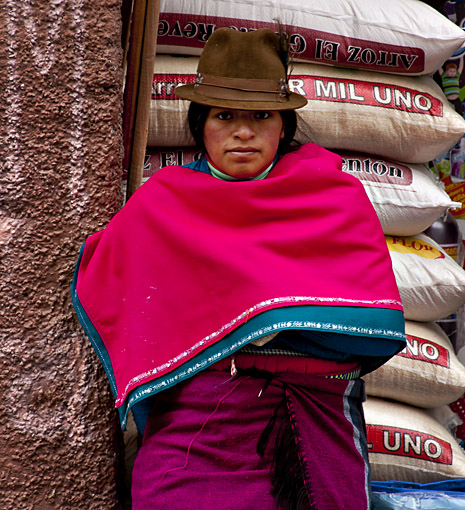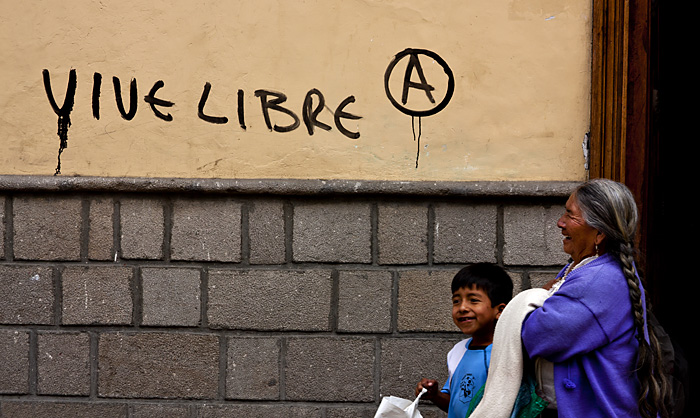Hi friends! I’m in Cuenca, Ecuador’s third-largest city.
From Banos, I went to Puyo, where begins the Amazon, which I visited with a guide. After, I moved into a hut of a family of Kichwa indigenous, inside their village. It was a small village of fewer than 100 people with many children wandering and playing.
The landlord was around in the forest searching for food, and his daughter, a little girl named Brigitte, accompanied me to the village to see the meeting room where they take decisions, the school, and various animals that live there: an alligator, a parrot, a nocturnal monkey, and a giant rat, a little crazy maybe because in a cage.
Before dark, the landlord returned with an armadillo caught by his dog, that had dug inside the hole where it was sleeping. The family cooked it. I’m vegetarian, so I ate rice, palmito (white filaments, fresh and soft, taken from the trunk of the palm), and yucca, a vegetable similar to potatoes.
In the evening, when it was already dark, I went to sleep upstairs in the hut. As always, it’s really nice to sleep in the forest for the concert of sounds from nocturnal animals that start with the setting sun. Sounds that resonate thanks to the total silence all around. There was a giant full moon. I fell asleep soon, and I woke up in the middle of a roaring tempest. The hut was wholly enveloped by a cloud.
The next morning, at 7, the landlord woke me up for another tour in the forest. He told me to get ready and go down. He said that he was busy, but I would have done the tour with his eldest son. But the bed called me back, and I fell asleep again. Then arrived Brigitte. She told me to get up to do the tour with her and two other siblings because no one knew where his big brother was at the moment. But I fell asleep again.
I woke up with kids all around, I was still half asleep, and the scene seemed surreal, with all these children repeating: “Giovanni, wake up!”, “Giovanni, wake up!”
I didn’t want much to wake up, I tell the truth. And also, why all this rush? I know that there is this terrible problem of deforestation, but even sleeping a few hours more for sure I could still manage to visit it.
Anyway, I finally went into the forest around there with Brigitte, a sister, and a brother. They were excellent, I have to say. They paved the way with machetes and knew all the plants and trees and their possible use.
All that vegetation that appeared to me as a confused green tangle had a utility for them. As food, as medicine, to make soap, to wash clothes, for painting their faces, to make necklaces, to build huts, to make baskets, etc. …
This reminded me of an old idea: to create a community where we work the minimum necessary to help Mother Earth feed us. And at that point to say fuck off to all the corporations that enslave us and to the states that steal us what is left, with taxes used just to pay the cops for beating us when we protest.
Nothing original, of course, since ever the smartest organize in that way, but seeing it now concretely, I’m convinced that it is indeed achievable. I don’t like to work anymore. I just want to laze during the day and drink wine the night by a bonfire.
“And to travel, how are you going to do?”
Well, guys, we can’t have everything…
“But you didn’t think of us? Your blog readers? What will we read after? If the hen has laid an egg or not?”
Eeeeh, I know, I know, my dear readers, but there are thousands of travel blogs, don’t be afraid of that. Undoubtedly not as brilliant, not with such beautiful pictures, not with such sharp analysis, jaunty humor, freshness, and originality of style… yes, I know, most of them seem like little wankers, you’re right, but what can I do? Can I continue to travel the world like a spinning top? Mhmmm, but in the end, why not? Ok, we will see, we will see… Now the photos.
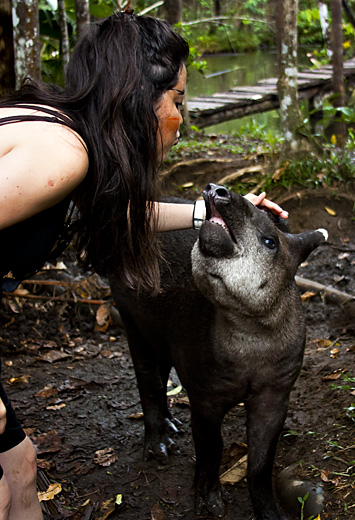 A tapir caressed by Sandra, a girl from Quito with whom I had the forest’s first tour.
A tapir caressed by Sandra, a girl from Quito with whom I had the forest’s first tour.
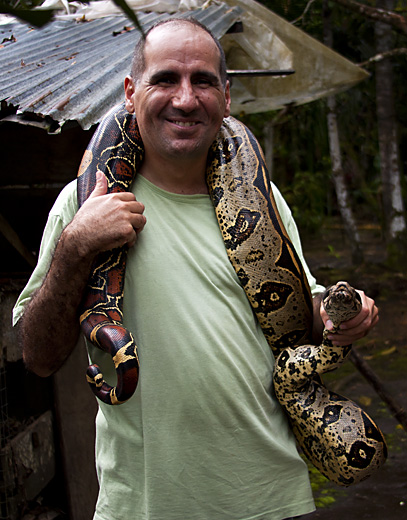 And with a typical boa on. In short, the usual bullshit you do in the Amazon rainforest.
And with a typical boa on. In short, the usual bullshit you do in the Amazon rainforest.
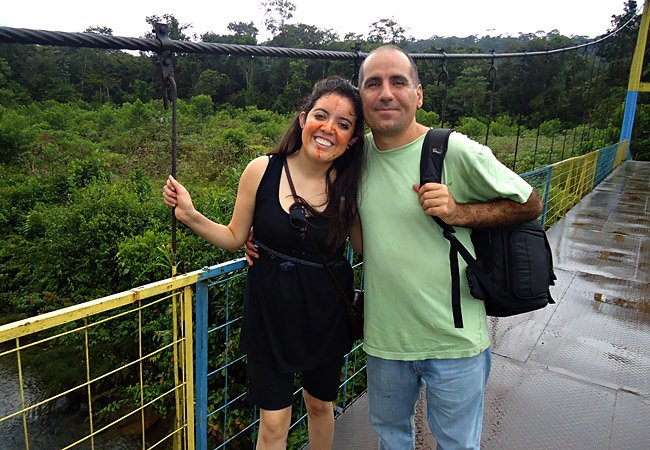 With Sandra on the bridge leading to the village where I slept.
With Sandra on the bridge leading to the village where I slept.
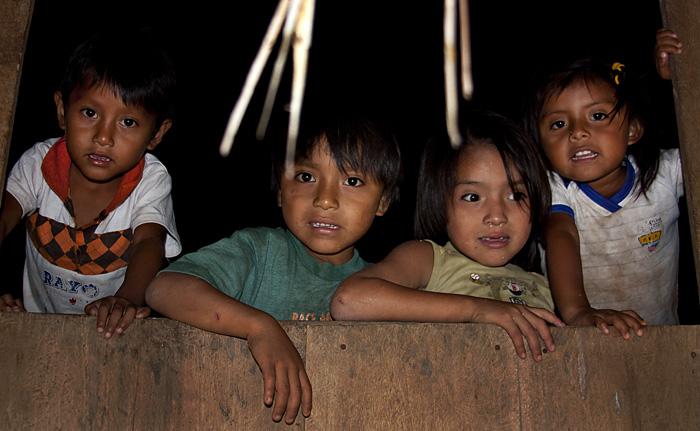 Children in the indigenous village.
Children in the indigenous village.
 The armadillo caught for dinner.
The armadillo caught for dinner.
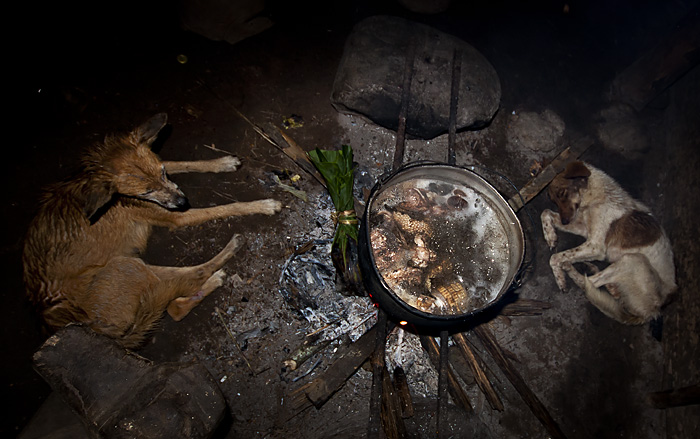 Dogs around the pot where the armadillo is cooked.
Dogs around the pot where the armadillo is cooked.
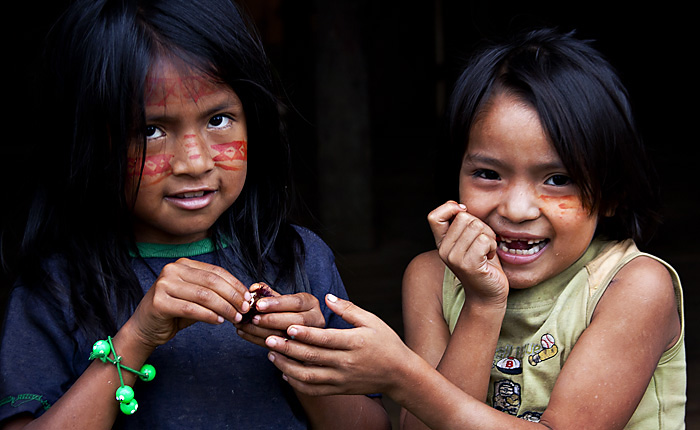 Girls painting their faces with the seeds of a fruit. The next day I surrendered to their requests, and I accepted to having my face painted too.
Girls painting their faces with the seeds of a fruit. The next day I surrendered to their requests, and I accepted to having my face painted too.
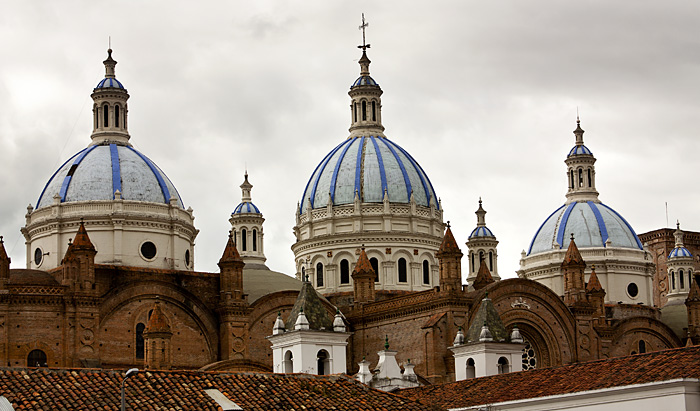 Cuenca, Ecuador’s third-largest city, is a beautiful colonial city. It is located at 2500 meters altitude. Before being conquered by the Incas first and the Spaniards soon after, it was an important city of the Cañari, one of the many Ecuador indigenous ethnic groups.
Cuenca, Ecuador’s third-largest city, is a beautiful colonial city. It is located at 2500 meters altitude. Before being conquered by the Incas first and the Spaniards soon after, it was an important city of the Cañari, one of the many Ecuador indigenous ethnic groups.






















































